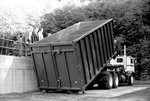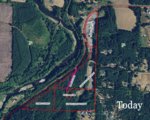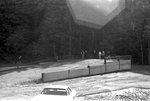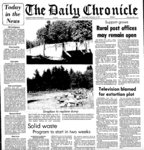



I’ve had a hard time finding the exact right moment to sit down and write this last piece on the Bunker Landfill. I realized that, at the time of writing this, I had been researching the old dump site for almost an entire year.
After my most recent conversations with the Washington State Department of Ecology, I know that this column will be the end of a chapter.
In case you aren’t familiar from previous columns, I had been researching potential pollutant sources in the Spooner Road area of Adna, where multiple cases of various cancers had popped up, seemingly unconnected — though so close to each other in proximity, inside of a mile or two area radius, that many questioned if the health issues could be related.
Knowing that many residents in that area depended on private wells, I started reading every DOE study on the Chehalis River that I could get my hands on.
After reviewing DOE documents, along with State Department of Health documents, I found a recurrent excessive nitrate issue in the area. DOE and DOH do not share databases, so it was likely the first time the agencies realized they had both detected excessive nitrates in the same area through groundwater and well tests.
Both DOE and DOH monitor nitrate levels in water, due to the impacts that excess nitrates can have on human health.
In my most recent conversations with DOE this week, they believe the excessive nitrates issue was likely connected to agricultural activities previously in the area, though an excessive nitrate reading was recorded between Spooner Road and Bunker Creek Road as recently as 2015.
After stumbling upon the nitrate information, I began finding pieces of history on the Bunker landfill and realized that the old dump site was not documented with the state, nor with Lewis County itself in its records.
I learned that the Bunker landfill had originally been near a mining site for the county gravel pit. The site started as an informal dumping site, later becoming a well-known public dumping site by the 1960s. As the dump filled, poison would be set out for rats, and then the whole pile would be lit on fire, monitored by on-site caretakers, like Boots.
Most concerning was that the landfill was located just a thousand feet uphill from the Chehalis River, yet the landfill had not been documented, let alone studied for its environmental impact.
I discovered and outlined five “lines of evidence,” as DOE calls them, when recording my landfill research for DOE:
1. Elevated manganese levels detected in the Chehalis River in Boistfort Valley Water tests in the late 1970s, when their Chehalis River uptake came online.
2. An early 1990s DOE document details an “unknown pollutant source” below the Ceres Hill Road bridge and above the Claquato bridge on State Route 6.
3. I had documents from the county stating that the land where the landfill was situated was suspected to have increased susceptibility to groundwater pollution, due to previous mining activities on the same property. And, there is significant evidence that the soil in the area of the landfill has sloughed downhill over time.
4. We can see that the section of highway at the bottom of the landfill, just feet from the riverbank, has been patched numerous times.
5. LIDAR images from Washington State Department of Natural Resources also shows evidence of sloughage.
Those five things, combined, tell me that there is a definite likelihood that the landfill site, at least as some point in time, was impacting the river in some way. And, potentially, the groundwater below the landfill.
After I reported all of this to DOE, they followed an internal process to investigate the landfill, which mostly just includes them visiting the site and documenting certain things from their end. DOE scheduled an appointment to visit the landfill site. I was denied access to this visit, so I visited the landfill myself with a friend who had first-hand knowledge of the site, just prior to DOE’s site visit.
The DOE official that visited the site, I learned, had not read any of the information I had prepared for DOE regarding these five lines of evidence. So she had no answers to my specific followup questions. The on site visit also, apparently, did not include any sort of testing.
I had a lengthy conversation this week with a DOE manager on the topic, detailing my frustration. But at the end of the day, DOE remained steadfast in their opinion of the site.
Officials with DOE do not believe that the the Bunker landfill site is a threat to the environment or human health at this point in time. They also stated to me that, because the refuse was burned, the landfill’s long term impact would likely be minimized (speaking generally, not taking into account the increased susceptibility for groundwater pollution).
All of my objections and frustrations with what I saw as a lack of interest were met with the same point: DOE doesn’t think the site is impacting the environment or health today. And, essentially, they don’t have the resources to go back and try to figure out if the landfill impacted health back then.
To be fair, there are thousands of sites just like the forgotten Bunker Landfill all across the state. At least half a dozen of those forgotten sites are right here in Lewis County.
At the end of the day, DOE focuses on the most hazardous, active threats to the environment and tries to be good stewards of the resources they have at hand.
In the end, I don’t see this end of the chapter as a loss. If I was a prospective homebuyer in the area, I’d want to know that I was buying land near a former dump site. And, the bits and pieces I was able to find in our archives and in public records about the landfill are now housed together, in a digital collection. Pieces that easily could have been further scattered to obscurity.
And, the old dump site is now formally documented with DOE for the first time ever.
These are all things that matter to those who value public information.
But I’ll always wonder about the things we don’t — and may never know — about the Bunker Landfill.
•••
Brittany Voie is The Chronicle’s senior media developer. She welcomes correspondence from the community by email at bvoie@chronline.com.